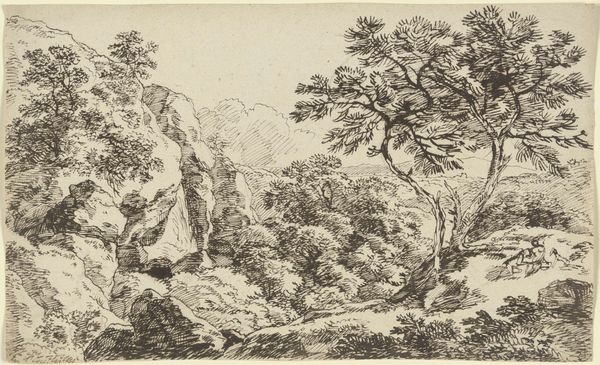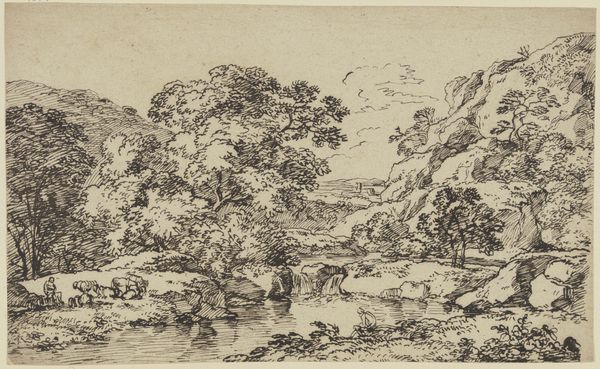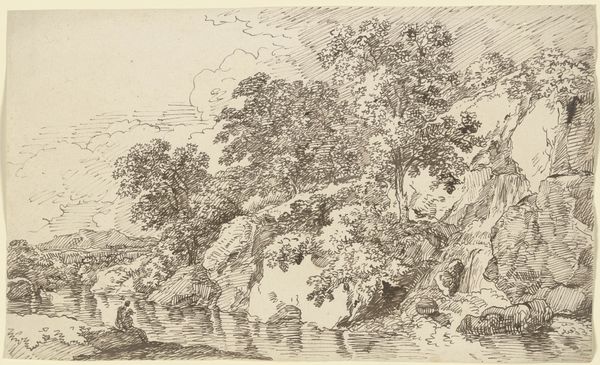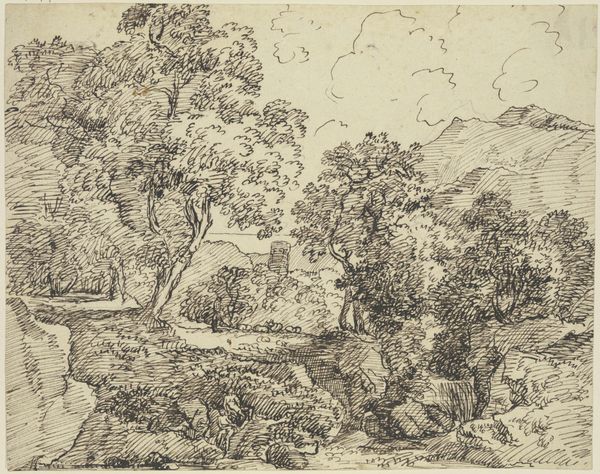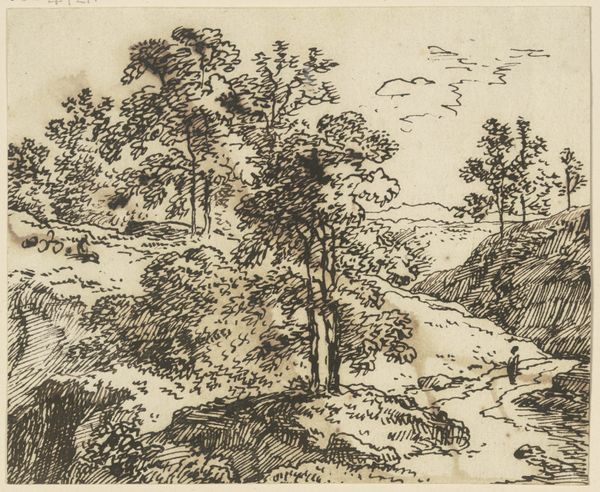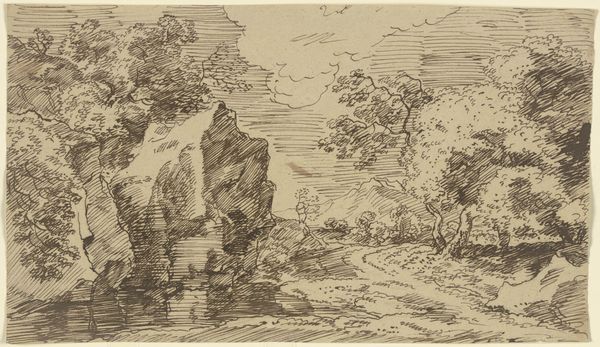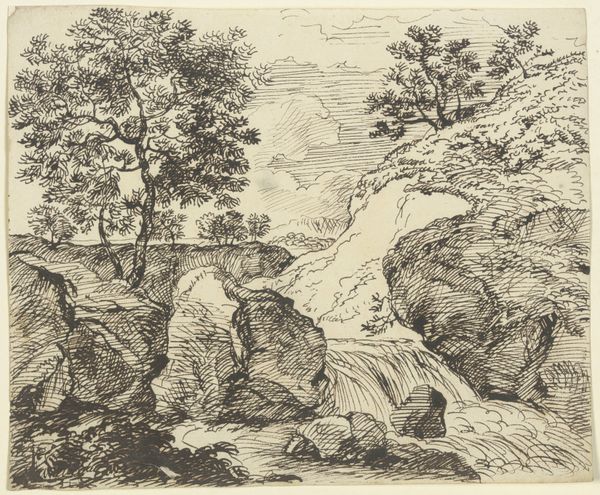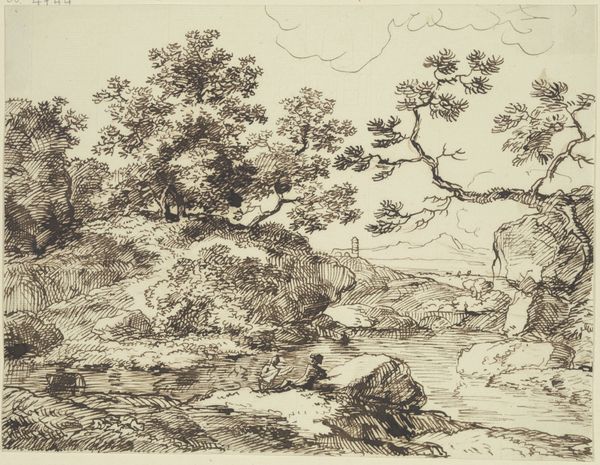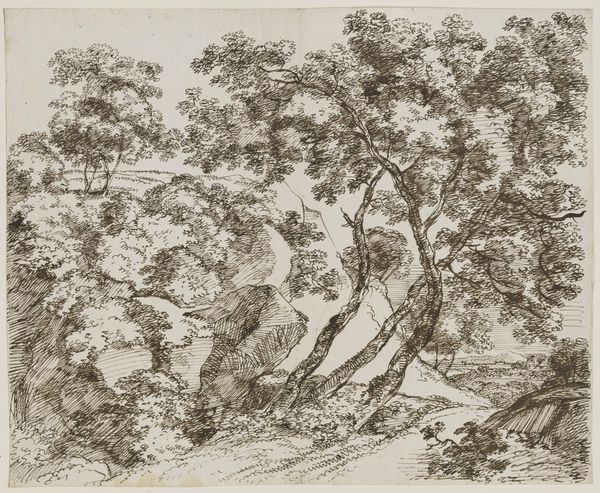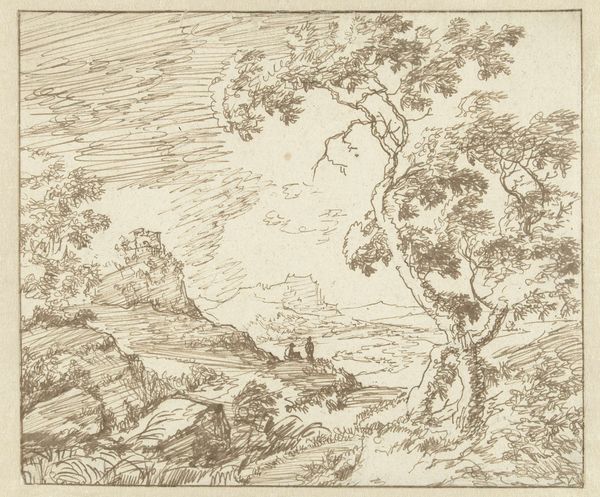
drawing, dry-media, ink, pen
#
drawing
#
ink drawing
#
pen drawing
#
landscape
#
dry-media
#
ink
#
romanticism
#
15_18th-century
#
pen
Copyright: Public Domain
Editor: Here we have "Uferlandschaft mit weidendem Vieh und Aussicht auf ein Gebirge," a landscape drawing by Franz Kobell. The piece, done in ink, evokes a very pastoral, serene mood. I'm particularly drawn to the detail in the trees. What do you see in this piece, especially considering its historical context? Curator: The ink drawing allows us to consider how 18th-century depictions of the landscape reflect the socio-political dynamics of the time. How do you interpret the depiction of nature and the presence of grazing cattle in the landscape? What meanings or ideologies might it embody? Editor: I guess it’s idealized, but also… owned? The grazing cows, they're part of someone's land, someone’s economy. Curator: Precisely. Think about how landscape art often served the interests of the landed gentry, visually reinforcing their power and claims to territory. How might the Romantics employ the sublime and beautiful in landscape depictions to legitimize class hierarchy or European claims of property? Does the style of rendering natural scenes here offer insights into contemporary social inequalities? Editor: That makes sense. I hadn’t really considered how idyllic landscapes could have that other function. So, looking at it again, there is this whole hidden layer of societal power. I’ll never see landscapes the same way. Curator: And hopefully that approach sparks further inquiry into who benefits from certain aesthetic representations and what stories might be missing or marginalized within these seemingly 'serene' scenes.
Comments
No comments
Be the first to comment and join the conversation on the ultimate creative platform.
